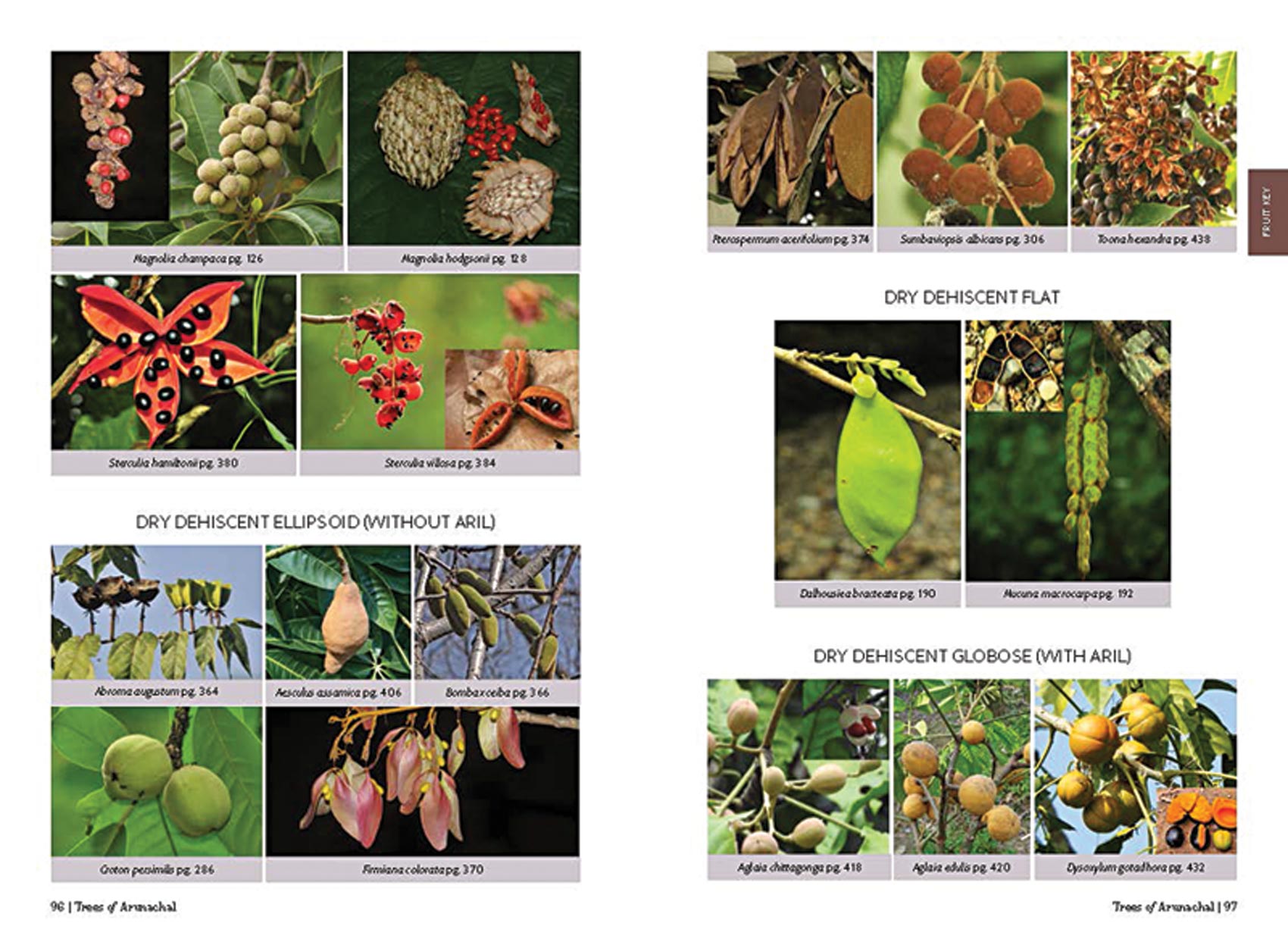Book Review: Trees Of Arunachal Pradesh
First published in Sanctuary Asia,
Vol. 42
No. 4,
April 2022
Authors: Navendu Page, Aparajita Datta and Bibidishananda Basu
Design: Kadambari Misra and Janhavi Rajan
Plant illustrations: Meena Subramaniam
Glossary/Key illustrations: Janhavi Rajan and Saniya Chaplod
Published by Nature Conservation Foundation, January 2022
Price: Rs.1,190/-
Flipping through Trees of Arunachal Pradesh, I can’t help but wonder what a thrill it would be to use this gorgeous field guide to spot a kamala tree or a blue fig tree, or the other two hundred plus woody plant species mentioned within its pages, in the expansive forests of the state.
The field guide is thorough in its organisation. The first section is split into three keys – leaf, flower and fruit – easily identifiable by colour codes given on the side of the book. I imagine when in a forest, if I spot a particular leaf, or fruit or flower, I can flip over to the relevant section and use the characteristics to narrow down the species range.
As the ‘How to use this book’ section clarifies – identifying species through the leaf is relatively more fool-proof, considering it is not as seasonally variant as flowers and fruits. The leaf keys, to their credit, are clearly classified in order, making it easy to follow characteristics in a simple flow chart. If you spot a tree, the starting point will be to identify whether its leaf is simple or compound (a handy illustration of what the difference between these two terms makes it super easy even for newbies like me!). Once that is determined, each type of leaf has groups underneath based on more characteristics. For instance, if it is a simple leaf, the next steps are to identify if it is – lobed or unlobed; then the arrangement of the leaves (alternate or opposite); then smooth or toothed margins, and more other characteristics. Once these characteristics are identified – for example, ‘Leaves, simple, lobed, alternate, toothed, penninerved’ – the flowchart directs the reader to the page number where the final identification can be done through images! Likewise, the flower keys (arranged by colour) and fruit keys (arranged by fig or non-fig, and then the latter further into dry or fleshy, and so on), are also quick to decipher once you familiarise yourself with the book.

After you have narrowed down the species names comes the interesting part – reading about the species in the second, much larger, section – ‘Species Accounts’! Arranged by family, the species pages are a treasure trove of information, no doubt a reflection of the authors’ invaluable years of field experience. Morphological description, Distribution, Ecology, and the IUCN status aside, the mention of plant uses and local names in as many dialects as possible is a nuanced touch. Accompanied by eye-catching photographs, over 241 species of woody plants are described in detail.
A special shoutout to the glossary, which includes botanical terms accompanied by illustrations for every layperson to comprehend. If you love trees, and plan to visit Arunachal anytime soon, this book is a must have in your backpack. It might be a bit heavier than you would prefer a field guide to be, but the invaluable knowledge it imparts more than makes up for it!
Reviewed by Abinaya Kalyanasundaram


